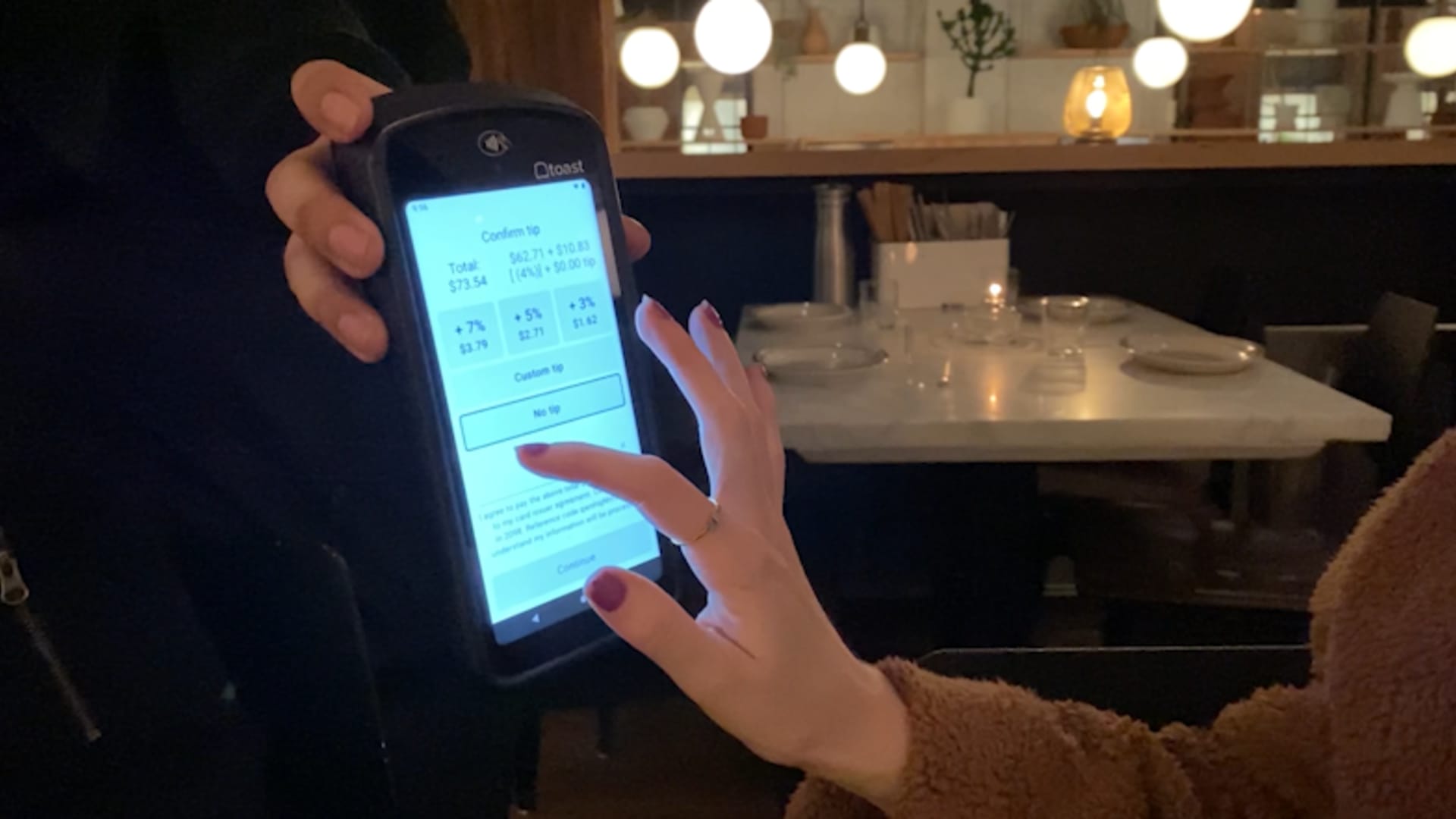Whether you’re at a restaurant, coffee shop or are using an app on your iPhone, you’re being asked to tip just about everywhere these days and for just about everything.
It’s one thing to choose not to tip the worker at the cash register of a toy shop or clothing store, places where workers aren’t typically considered tipped workers, but when you’re dining at a restaurant, tipping isn’t really optional.
Tipped workers who are behind those payment tablets are feeling the brunt of tip fatigue. In the second quarter of 2023, tipping at full-service restaurants fell to the lowest level since the start of the Covid-19 pandemic.
That’s particularly painful for workers in the 16 states that adhere to the federal minimum wage for tipped workers.
Here’s how it works: The federal minimum wage is $7.25 per hour. But if you’re a tipped worker, it’s $2.13 per hour, also referred to as the subminimum wage. The difference between the two, $5.12, is called a tip credit. If a worker doesn’t receive $5.12 an hour in tips, the employer is responsible for paying them that difference — that’s the law.
“Most consumers have no idea that every time you tip in a restaurant in most states, it cuts against the worker’s wage rather than being something on top of the wage,” said Saru Jayaraman, president of advocacy group One Fair Wage.
Watch the video above to learn more.
